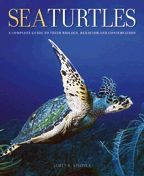
Johns Hopkins UniversityEst. 1876
America’s First Research University
The stranding of so many Kemp’s ridley turtles in Massachusetts is both good news and bad news
An expert’s perspective: James R. Spotila

“The stranding of so many Kemp’s ridley turtles in Massachusetts,” Jim explains, “is both good news and bad news. The good news is that there are a lot of juvenile Kemp’s ridleys from conservation efforts in Mexico for many years. The bad news is that the loss of so many turtles due to cold stunning threatens the supply of juvenile animals that could replace all those turtles killed in the Deep Water Horizon Gulf oil spill suggests that there may be new and/or increasing problems with ocean warming and currents that are affecting the turtles that spent their summer vacation off Cape Cod.”
For additional perspective, we offer this excerpt from Jim’s most recent book, Saving Sea Turtles: Extraordinary Stories from the Battle against Extinction:
Each year the International Sea Turtle Society brings together scientists and conservationists to discuss the latest information on sea turtles and to develop plans to restore their numbers.
Yet with all the dramatic and often heroic efforts, sea turtles still hang close to the edge of extinction. Without these efforts there is little doubt that things would be much worse. Kemp’s ridleys would certainly have gone extinct. There would not be any green turtles in the Caribbean. Most other sea turtle populations would be gone, or at least reduced. There would certainly not have been the recoveries we have witnessed in some areas, such as population growth at Tortuguero in Costa Rica and the increases on Ascension Island. There are reasons for celebration. The year 2000 came and went, and the world had the same number of sea turtle species as it had in 1900. There were, to be sure, many fewer turtles in the interceding 100 years (we had lost perhaps 90% in terms of overall numbers in that 100-year span).
Sea turtles are a shadow of their former populations in most of the world. That is a sad fact of life. Still, we have the seven species, still alive in the wild and still good candidates for recovery. . . Sea turtles need a constituency where they live. Arguably the most effective long-term efforts have been to teach children to love sea turtles. When they grow up, they will become advocates for the turtles.
What is your part in this unfinished play? You can walk the beach. You can volunteer locally or internationally. You can get lights turned out on nesting beaches. You can keep that hotel from going up on the turtle beach. You can join local, national, or international organizations that work to save turtles. Ed Drane helped save sea turtles in South Carolina, Georgita Ruiz saved olive ridleys and green turtles in Mexico, and Randall Arauz saved them in Costa Rica. They are not superhuman. In fact, they are ordinary people who just did what they could to make the world a better place. Dream of an ocean where turtles will swim free of longlines and gill nets and come ashore to nest on dark beaches without poachers. I believe that, despite all of the problems and all of the threats, we will save the world’s sea turtles. We will do it one beach at a time, one turtle at a time, and one person at a time. You need to be that person. Come join us.


